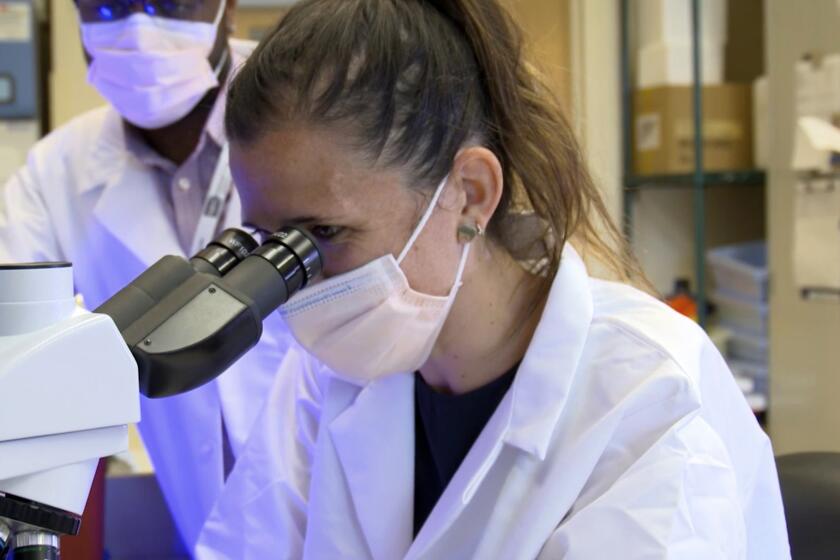Hawking Illuminates Black Hole Reversal
- Share via
DUBLIN, Ireland — Stephen Hawking formally presented a paper Wednesday that said he was wrong about black holes for almost 30 years.
The renowned Cambridge University physicist’s paper argued that black holes, the celestial vortexes formed from collapsed stars, preserve traces of objects swallowed up and eventually could spit bits out “in a mangled form.”
Hawking’s radical new theory caps his struggle to explain a paradox in scientific thinking: How can objects really disappear inside a black hole and leave no trace, as he long believed, when subatomic theory holds that matter can be transformed but never destroyed?
Hawking previously had insisted that black holes destroy all molecular fingerprints of their contents and emit only a generic form of radiation.
But Wednesday at the 17th International Conference on General Relativity and Gravitation, Hawking presented new calculations that suggest that black holes are able to cast out their contents -- and that there’s only one way in and one way out.
Hawking, 62, said he no longer believes a 1980s theory that black holes might offer passage into another universe, a rival explanation for identifying where matter and energy go when consumed by a black hole.
Hawking now sides with particle physicists who have long said that any matter swallowed by a black hole can’t just disappear but must eventually generate a specific output.
The latest theory offers hope that scientists one day may identify the history of what a black hole has taken in over the eons -- by decoding what it emits.
“There is no baby universe branching off [inside a black hole], as I once thought. The information remains firmly in our universe,” Hawking said.
“I’m sorry to disappoint science fiction fans, but if information is preserved, there is no possibility of using black holes to travel to other universes.”




